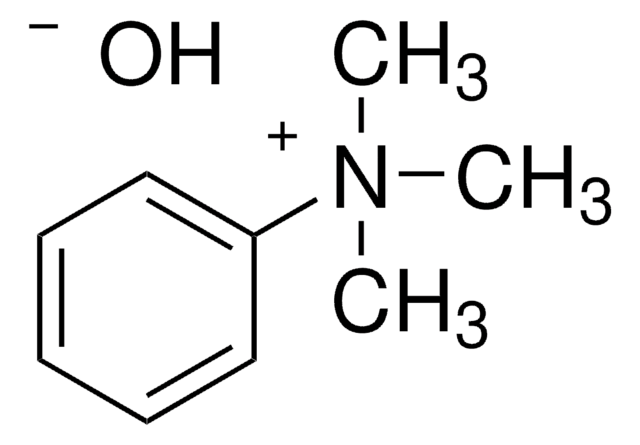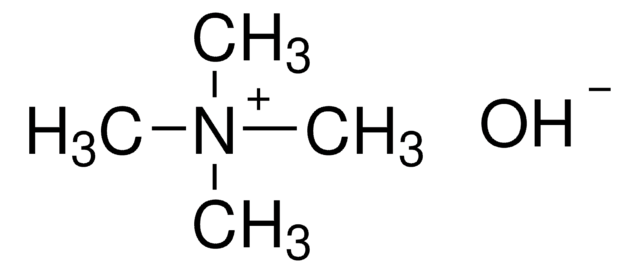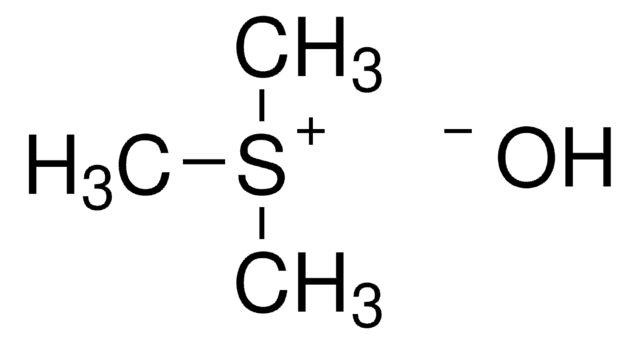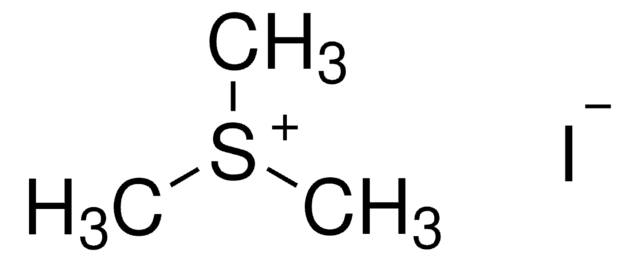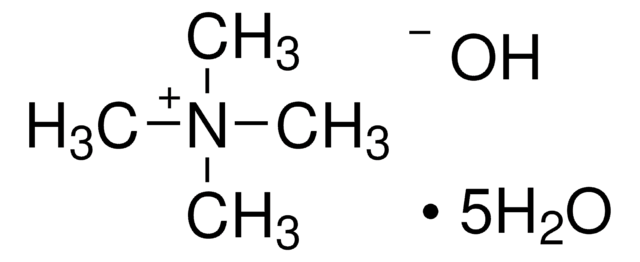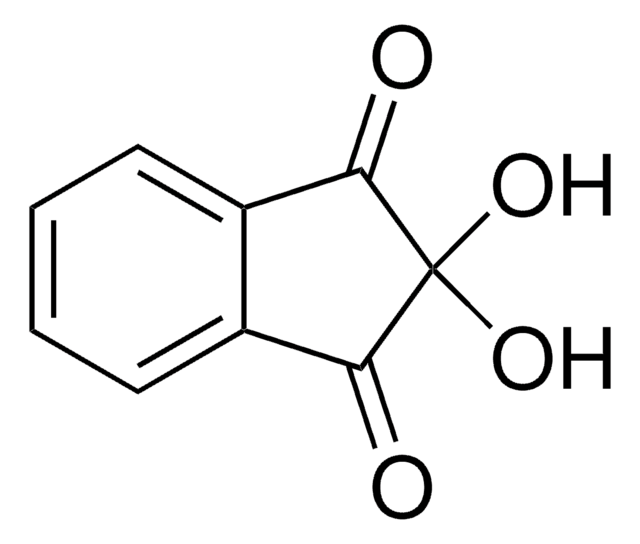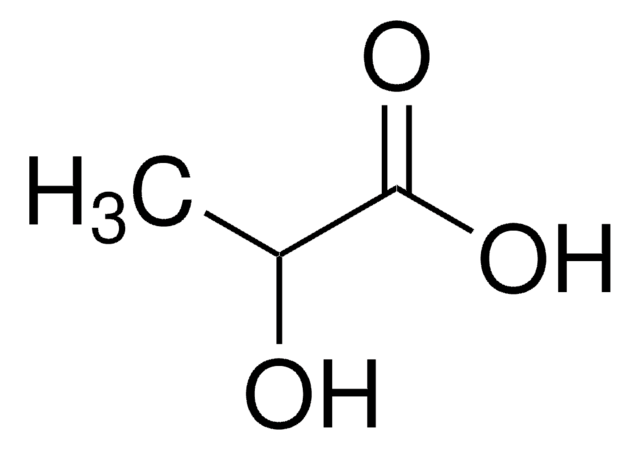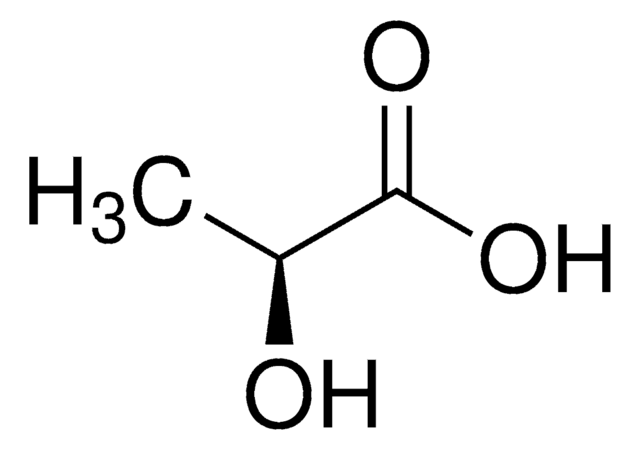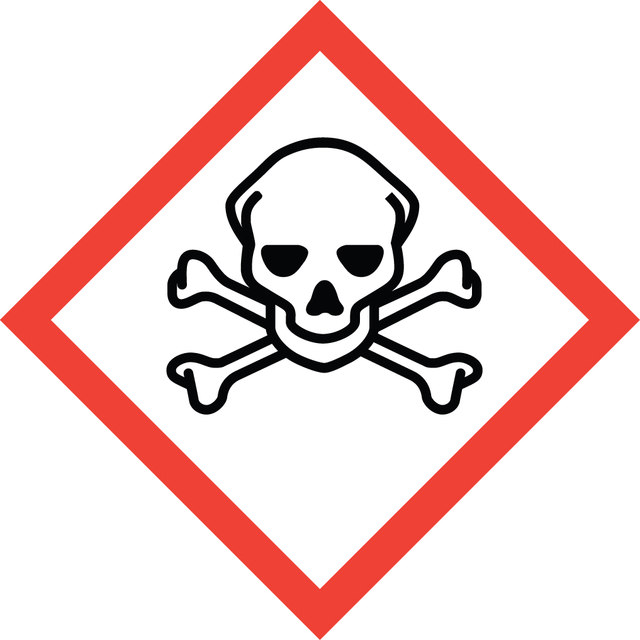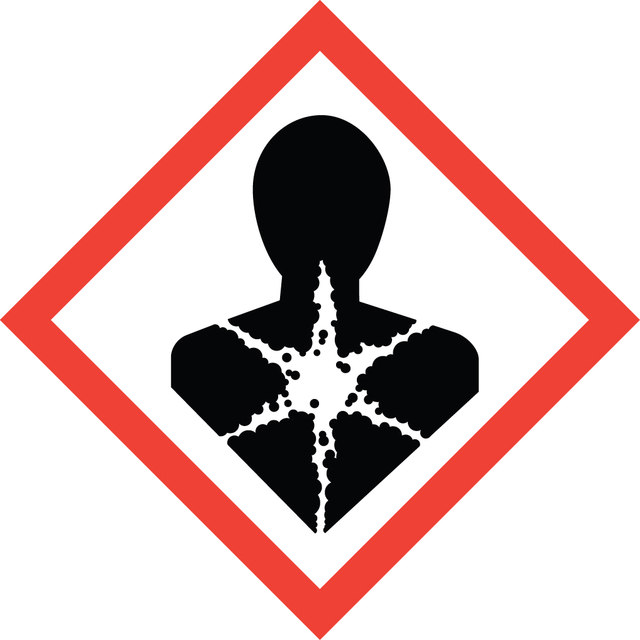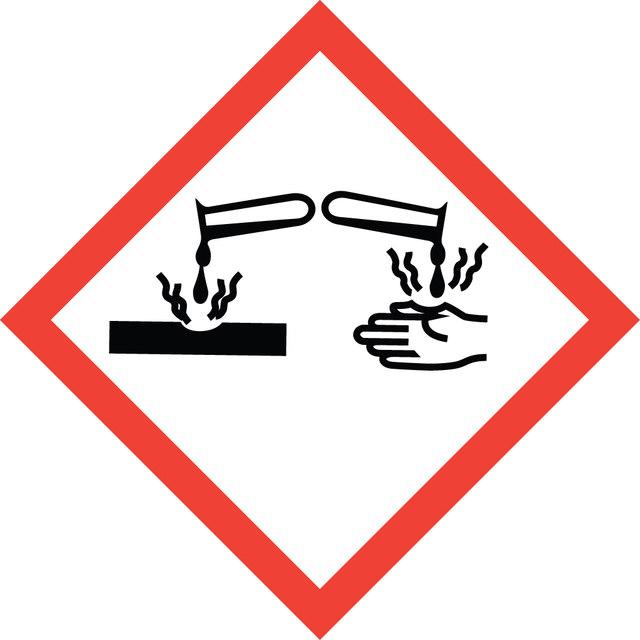推荐产品
等级
for GC derivatization
质量水平
表单
liquid
质量
LiChropur™
反应适用性
reagent type: derivatization reagent
reaction type: Esterifications
浓度
~0.5 M (CH3)3N(OH)C6H5 in methanol
技术
gas chromatography (GC): suitable
杂质
≤0.2% halides (as chloride)
储存温度
2-8°C
SMILES字符串
[OH-].C[N+](C)(C)c1ccccc1
InChI
1S/C9H14N.H2O/c1-10(2,3)9-7-5-4-6-8-9;/h4-8H,1-3H3;1H2/q+1;/p-1
InChI key
HADKRTWCOYPCPH-UHFFFAOYSA-M
正在寻找类似产品? 访问 产品对比指南
一般描述
Trimethylphenylammonium hydroxide (TMAH) is a methylating reagent.
应用
Learn more in the Product Information
Suitable for the derivatization of amino acids, n-methyl and n-aryl carbamates and fatty acids, clonidine, and substituted phenylureas.
TMAH may be used as a 0.1 mole/litre solution in methanol to determine plasma concentrations of carbamazepine and other anticonvulsant drugs, including phenobarbital, diphenylhydantoin, primidone, and mephenytoin using Gas-Liquid Chromatography.
其他说明
可适用销售限制条款
Reagent for n-methyl and methyl esters.
法律信息
LiChropur is a trademark of Merck KGaA, Darmstadt, Germany
警示用语:
Danger
危险分类
Acute Tox. 3 Dermal - Acute Tox. 3 Inhalation - Acute Tox. 3 Oral - Eye Dam. 1 - Flam. Liq. 2 - Skin Corr. 1B - STOT SE 1
靶器官
Eyes
储存分类代码
3 - Flammable liquids
WGK
WGK 3
闪点(°F)
51.8 °F - closed cup
闪点(°C)
11 °C - closed cup
个人防护装备
Faceshields, Gloves, Goggles
法规信息
危险化学品
Simultaneous determination of carbamazapine ("Tegretol") and other anticonvulsants in human plasma by gas-liquid chromatography.
J C Roger et al.
Clinical chemistry, 19(6), 590-592 (1973-06-01)
Alec N Salt et al.
Journal of the Association for Research in Otolaryngology : JARO, 13(6), 771-783 (2012-09-13)
Perilymph pharmacokinetics was investigated by a novel approach, in which solutions containing drug or marker were injected from a pipette sealed into the perilymphatic space of the lateral semi-circular canal (LSCC). The cochlear aqueduct provides the outlet for fluid flow
Alec N Salt et al.
Hearing research, 232(1-2), 78-86 (2007-07-31)
Local delivery of drugs to the inner ear is increasingly being used in both clinical and experimental studies. Although direct injection of drugs into perilymph appears to be the most promising way of administering drugs quantitatively, no studies have yet
Anthony A Mikulec et al.
Otology & neurotology : official publication of the American Otological Society, American Neurotology Society [and] European Academy of Otology and Neurotology, 30(2), 131-138 (2009-01-31)
Drugs applied to the middle ear enter perilymph through the bony otic capsule. Drugs applied intratympanically in humans are thought to enter the cochlea primarily through the round window membrane (RWM). Local drug treatments of the ear are commonly evaluated
Jeffrey T Auletta et al.
Chemico-biological interactions, 187(1-3), 135-141 (2010-05-25)
Acetylcholinesterase (AChE) contains a narrow and deep active site gorge with two sites of ligand binding, an acylation site (or A-site) at the base of the gorge and a peripheral site (or P-site) near the gorge entrance. The P-site contributes
我们的科学家团队拥有各种研究领域经验,包括生命科学、材料科学、化学合成、色谱、分析及许多其他领域.
联系技术服务部门